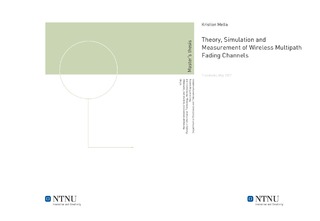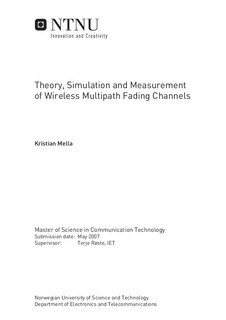| dc.description.abstract | Multipath fading is a very common phenomenon in signal transmission over wireless channels. When a signal is transmitted over multipath channels, it is subject to reflection, diffraction and refraction. This results in multiple versions of the same signal to arrive at the receiver, each of which has suffered from various path loss, time-delay, phase shift and often also frequency shift. The latter is a result of Doppler shifts, which is experienced whenever a relative movement between the receiver and transmitter or scatterers is present. The communication environment changes quickly over location or time, thus introducing uncertainties to the channel response. Such channels result in increased system complexity, and the propagation effects need to be identified in order to predict the channel behaviour. Path loss is experienced in all types of radio channels, and its metrics are often determined by empirical path loss models. The path loss effects the mean received signal level, whereas large-scale fading (Shadowing) results in large-scale fluctuations of this received level. These variations are superimposed by the small-scale fluctuations, or small-scale fading, caused by multipath reception and Doppler shifts. Small-scale fading is simulated to gain a better understanding of these effects. In order to observe these effects satisfactory, the whole digital radio communication system chain must be simulated. Simulations are also performed for estimating the data capacity over both mobile and fixed multipath channels, and the resulting capacity of multipath reception exceeds the capacity of a flat channel due to increased received energy. In order to classify the effect of multipath channels on signal transmission, the profile of the channel for a given scenario has to be known, i.e. channel metrics such as the RMS delay spread is essential for a successful radio system design. A multipath channel profile and its RMS delay spread can be derived from a vast number of channel measurements performed for a given scenario. Measurements on the multipath channel impulse response have been performed, RMS delay spread has been calculated, and the procedure of the channel measurement process itself is simulated in Matlab. | nb_NO |

